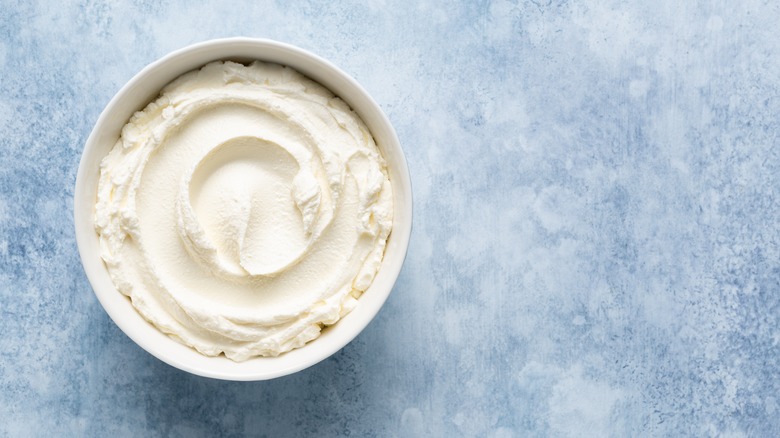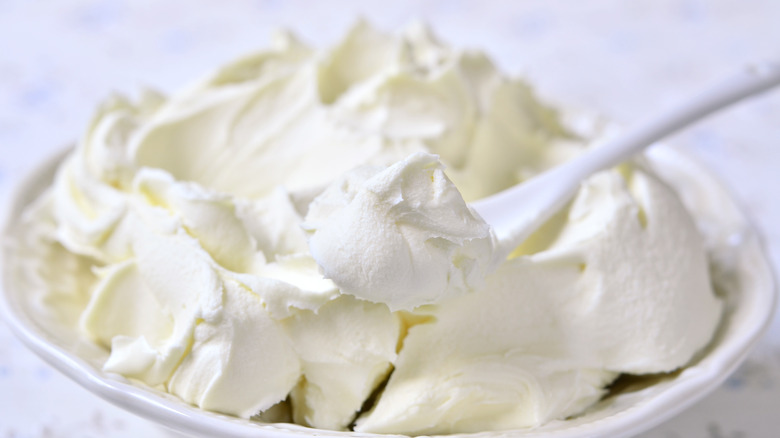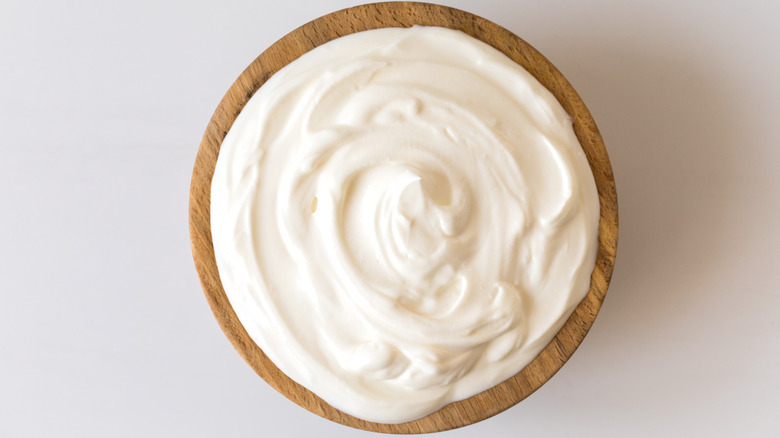Fromage Blanc Vs. Creme Fraîche: What's The Difference?
When you think of French cuisine, likely the first ingredient you think of is the range of delicious, decadent, gourmet cheeses the European country has to offer. It's believed that there are anywhere from 400 to 1,000 varieties and subvarieties of French cheeses, according to The Local.
France is particularly well known for its variety of soft cheeses, including brie, Camambert, Chevre or goat cheese, and Roquefort sheep's milk cheese, just to name a few (via Lions Deal). While each cheese is made in slightly varied settings and with different methods, they're universally unripened. The oldest soft cheese in France is believed to be brie, per French Waterways, dating all the way back to 774 A.D.
Aside from cheeses, French cuisine is known to heavily feature dairy products like butter and cream. With so many cheeses alone, not to mention the variety of butter and creams, it can get hard to know the difference between all the creamy products. Two French dairy staples that are easily confused in appearance are a soft cheese called fromage blanc and a tangy cream known as crème fraîche. But despite their similar looks, they are quite different in taste, production, and use.
Fromage blanc
Fromage blanc translates to "white cheese," and is a cultured French cheese, per The Cheese Professor, which is made of overnight fermented curds. Fromage blanc is made using a similar process to yogurt, but uses buttermilk instead of milk and an enzyme called rennet that makes the proteins sturdy and firm.
Fromage blanc has a texture similar to yogurt, but a little thicker and spreadable, describes Gourmet Sleuth. While this fromage blanc is naturally fat-free, it is often sold with added cream, which can make it more akin to thicker, fat-heavy sour cream. With no added cream or fat, the cheese will curdle when heated, but with added cream/fat — either 20% or 40% — it can be added to sauces, heated, or whipped, according to oChef.
Fromage blanc is a little tangy and acidic, but not overpoweringly savory or sweet. As Nomfluence explains, the soft, spreadable cheese can be used in a variety of ways: It can be added to baked goods, sauces, or simply spread onto toast. It can stand in for sour cream or ricotta, and often is used to replace Greek yogurt, and vice versa. Add lightly whipped fromage blanc to toast with fruit or savory toppings, whip it with some eggs for a fluffy omelet, or use it instead of milk in a gratin. Fromage blanc is more tart than crème fraîche, and has less fat, making it a better topping than a mix-in when comparing the two (via Flash Mode).
Crème fraîche
Crème fraîche is more of a traditional cream, translating to "fresh cream," per BBC Good Food. Crème fraîche has a base of cream that usually has 30% fat, which is then soured through a culture. The result is something similar to sour cream. However, the fat content and souring process are unique, and the end result is a little less sour, tangy, or acidic.
Crème fraîche can be used for both savory and sweet recipes. oChef points out that true crème fraîche can be hard to find in the United States because the majority of cream is pasteurized, which limits fermentation. American crème fraîche producers use an artificial fermentation process, but the end result is still a lovely, neutral-flavored cream you can use for a variety of dishes. You can find it with both high and low-fat percentages, but the best crème fraîche will have higher fat, yielding a much creamier product.
For soups or chili, for example, if you want some slightly tangy, but not too overpowering creaminess, you can add a dollop of crème fraîche, as it won't curdle the way sour cream does (via Kitchn). On the flip side, it can be used to brighten sweeter flavor profiles, like in tarts or crepes. Crème fraîche is better in hot dishes as opposed to fromage blanc, since it will never curdle.


